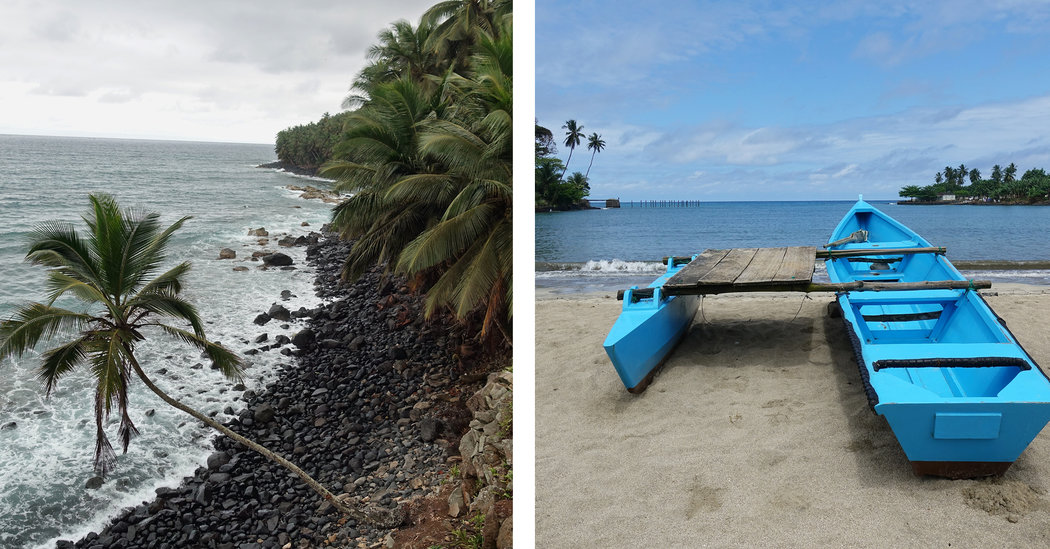
“Príncipe’s government has taken another path,” said Mr. Torres. “They want to preserve the island.”
Mr. Shuttleworth’s approach has to been to treat the hotel as a kind of living museum. He’s preserved the plantation house’s facade and its original grand wooden staircase and ornate ceilings. Outside, a plaque commemorates the spot where the astronomer Arthur Eddington came during a solar eclipse in May 1919 and took photographs that were the first experimental test to prove Einstein’s theory of relativity.
I certainly felt conflicted staying in a former plantation house, not just as an American whose country is still reckoning with its own history of slavery, but also as a tourist who is constantly assessing the privilege of being able to travel to a place as beautiful as this. By supporting their economy and telling their stories, could I, in a very small way, help those who live here move forward?
When Príncipe’s economy collapsed after independence, its people adapted to living off the land — but that doesn’t mean they have adequate living conditions. Families of four are crammed into one-room senzalas. Most children have respiratory issues because the unelevated senzalas are filled with mold from Príncipe’s frequent rains. By request of the regional government, and with funding from HBD, U.N.-Habitat has proposed a voluntary resettlement project, with new, sustainable housing that has basic amenities. All but three of 136 households have signed on. In an effort to cater to individual needs and to give the town some character, each household has chosen its future dwelling from four designs.
As I wandered through the senzalas with Mr. Torres and Danilson Gomes, a young man from the community who serves as a liaison, we got a warm welcome. One woman in her 70s grabbed my hand and held it as we walked around. Others, who were introduced to me as community leaders, invited us into their homes. There is some concern that the resettlement is a way of clearing up the senzalas to accommodate expansion of the hotel. But Dani, our young guide, told me that he and his family are excited about the move. He will be leaving the island for the first time to attend a university in Portugal, but plans to come back, he said, “to help my country and help my people.”
Back to São Tomé
I thought a lot about the spirit of community here on my last day back in São Tomé. I had hired a local guide, Juliano Pina, to take me to the beaches and villages on the southern end of the island. On the way back, our S.U.V. got hopelessly stuck in mud, three hours before my flight. A man named Ricardo who had been fishing nearby, came over and began gathering palm fronds and rocks to help with traction. More friends from his village joined in, as did another guide taking a tourist to the beach, until we had a team of nine or 10, many of them children, pushing with all their might. The car broke free. I handed out the last of my dobras, and made my flight with time to spare.
This, Juliano said, was the São Tomé way: Leave no one behind. I like to think of it as a moment when nature could have won, but chose to give us a break.






